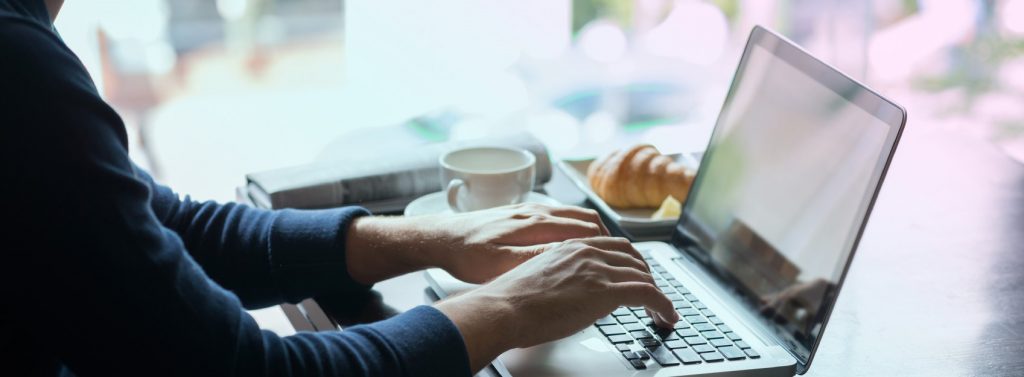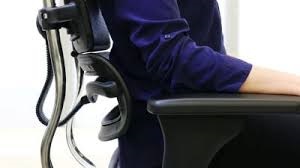
Working From Home? Here’s How To Get Your Sitting Posture As Good As It Can Be.
Two weeks into working from home and I bet everyone already has a lot more appreciation for their standing desk and adjustable chair back in the office! If you already have a fully equipped home office then kudos to you. Unfortunately, most of us are not that lucky and are currently sitting at our dining table, coffee table or sofa whilst trying to balance our laptop on our knee. Have you started noticing more back and neck pain since the transition? If you have, believe me you are not the only one.
As well as not having your normal desk setup, many people are also sitting in front of their computers much longer than usual and their step count hasn’t reached the 10 000 mark in days. Working from home provides us with a lot less distractions compared to the office meaning we have less movement throughout our working hours. With less movement, poor desk ergonomics and a lack of office equipment we are much more likely to develop postural pain and discomfort during this period. Below are some practical tips and advice to help get you through this uncertain time by making things a bit more comfortable.
Chair
First, let’s look at your chair height. If you have an office chair at home set the chair height so that your feet are firmly on the floor and your elbows are in line with the top of the workstation. We recommend a 100-degree angle at your elbow. This sitting height reduces strain on your shoulders and neck because your forearms are supported by the desktop.
Also, your knees should be positioned slightly lower than your hips. This reduces the amount of tightness that develops at the front of your hip. If you don’t have an adjustable chair, put something solid underneath your feet so that your legs are fully supported.

Try to keep your back fully supported by the backrest of the chair. This might mean having to bring the chair in closer to the desk – don’t perch on the front edge of your seat! If your back is not supported it has to work much harder to keep you upright, which really increases the load on your muscles and other tissues throughout the day. This can produce tightness and discomfort in many areas of your body including your back, neck and shoulder.
It is important to remember you DON’T need to sit in completely upright position with your back perfectly straight! You may have tried this and soon realised you could’t hold this posture for more than a few minutes. This is because it’s a very unnatural posture, so maintaining it produces muscle fatigue, tightness and pain. We recommend sitting with your backrest slightly reclined, as this helps open the front of your hips and offloads your lower back. Remember there is not one ideal perfect posture and if it is comfortable for you then it works!
Screen
If you are working on your laptop and are home for the foreseeable future, we strongly advise you to buy an external monitor. This is because it’s basically impossible to setup anything resembling good ergonomics using only a laptop, which is fine for intermittent use but is really not intended for prolonged periods. If you can’t buy a monitor, angle your laptop screen back so you can see it with the least amount of neck forward-bend as possible.
If you are using an external monitor raise your screen using books or boxes so that the top third of the screen is level with your eyes. If you are using an external keyboard then put your laptop so that the screen is at this height. Also, position the screen at approximately arm’s-length distance away.
Keyboard and Mouse
If you are buying an external monitor, we also recommend adding a keyboard and mouse to your shopping list. This will let you to set up the best possible ergonomic environment. If you already have a keyboard position it directly in front of you, with your mouse placed adjacent to the keyboard on the left or right-hand side. Make sure there is enough space between the keyboard and the desk edge to rest your forearms. Relax your shoulders and type with your forearms supported and wrists in neutral to reduce strain on your forearm muscles.
Desk
Try to use a workstation that allows adequate leg clearance and has enough space to complete your work tasks. We recommend changing position regularly – try not sit for more than 30 minutes, and if you’re using a laptop work in standing for 10-15-minute periods using the kitchen worktop throughout the day to offload your lower back and hips.
Keep Active!
The most important advice we can give you is to remember to stand up, stretch, and move! Your body is designed to move, not to stay in static postures for long periods of time. It’s important to schedule regular short breaks away from the workstation every 30-60 minutes. We understand this can be hard to remember so below we have created a list of things to help bring more movement into your day:
• Download the ‘Stand Up’ app, which is a flexible work break timer
• Set outlook reminders to move in your calendar
• Stand up when you answer a phone call, and continue to stand or walk around the room while you talk
• Create reminders to move on your smart watch – this could be as easy as just standing up and walking around the room!
• Your eyes also need a break so use the 20/20/20 rule – every 20 minutes stare 20 metres into the distance for 20 seconds. This will help reduce headaches, dry eyes and eye strain from staring at your screen for too long
• We are still allowed outside for exercise so try and plan a walk or run on your lunch break
Hopefully this has given you some helpful tips on ergonomics at home. You can also check out our Instagram page @centralperformance for some mobility videos designed for office workers. It’s vital to maintain good mobility in your upper & lower back, neck and hips to reduce your risk of strains and pain from working at home.
If your new niggles are lasting longer than usual and are affecting your work, give us a call on 9280 2322 or book an appointment with one of our physios to help make life a little bit easier for you!

